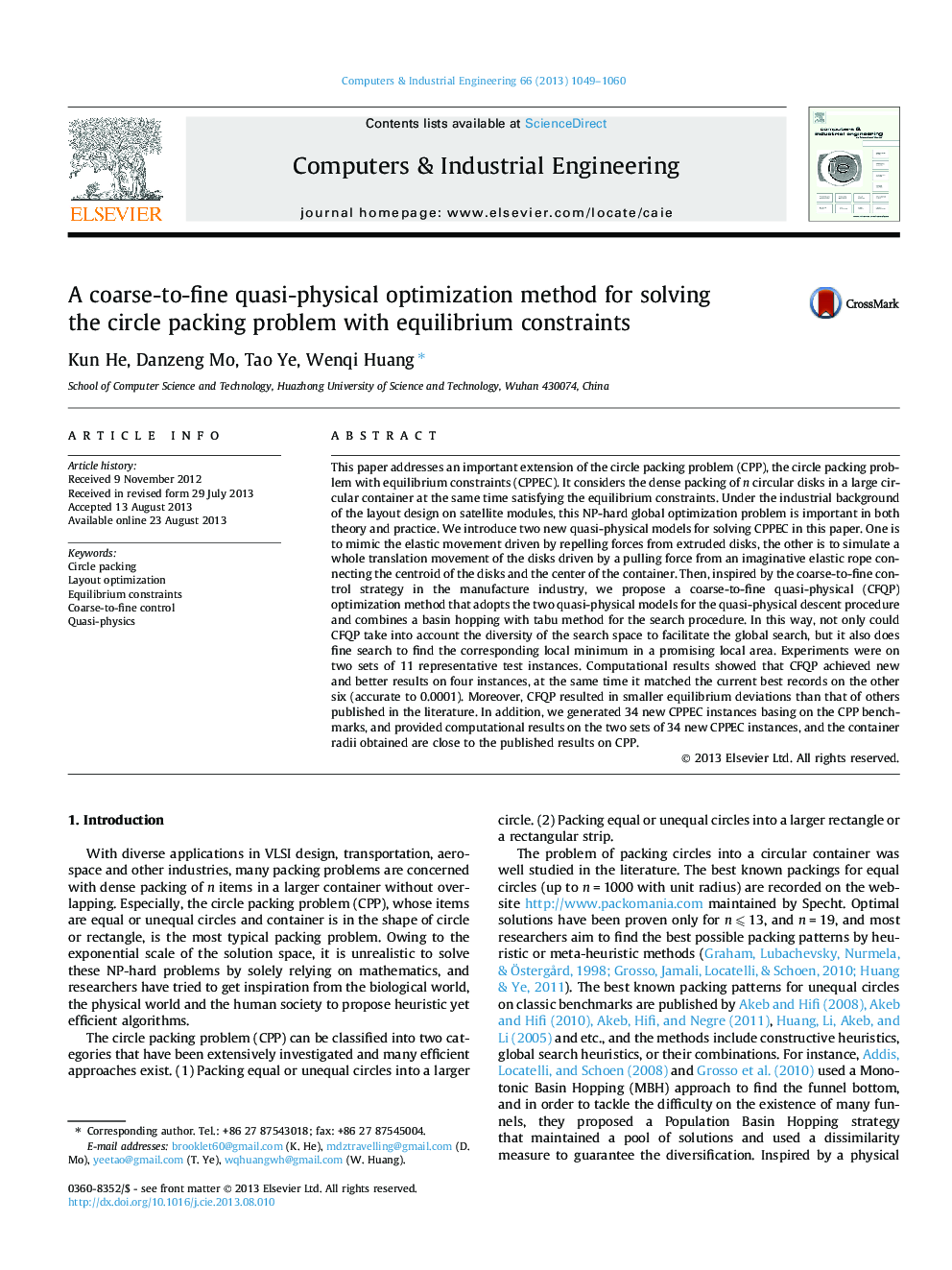| کد مقاله | کد نشریه | سال انتشار | مقاله انگلیسی | نسخه تمام متن |
|---|---|---|---|---|
| 1133857 | 956045 | 2013 | 12 صفحه PDF | دانلود رایگان |

• Proposes two new quasi-physical models for a circle packing problem, CPECP.
• Proposes a coarse-to-fine optimization method for this problem.
• Achieved better results on four instances, and matched the current best records on the other six.
• Resulted in smaller equilibrium deviations than that of others published in the literature.
• Provides a way to enrich CPECP benchmarks by utilizing CPP instances.
This paper addresses an important extension of the circle packing problem (CPP), the circle packing problem with equilibrium constraints (CPPEC). It considers the dense packing of n circular disks in a large circular container at the same time satisfying the equilibrium constraints. Under the industrial background of the layout design on satellite modules, this NP-hard global optimization problem is important in both theory and practice. We introduce two new quasi-physical models for solving CPPEC in this paper. One is to mimic the elastic movement driven by repelling forces from extruded disks, the other is to simulate a whole translation movement of the disks driven by a pulling force from an imaginative elastic rope connecting the centroid of the disks and the center of the container. Then, inspired by the coarse-to-fine control strategy in the manufacture industry, we propose a coarse-to-fine quasi-physical (CFQP) optimization method that adopts the two quasi-physical models for the quasi-physical descent procedure and combines a basin hopping with tabu method for the search procedure. In this way, not only could CFQP take into account the diversity of the search space to facilitate the global search, but it also does fine search to find the corresponding local minimum in a promising local area. Experiments were on two sets of 11 representative test instances. Computational results showed that CFQP achieved new and better results on four instances, at the same time it matched the current best records on the other six (accurate to 0.0001). Moreover, CFQP resulted in smaller equilibrium deviations than that of others published in the literature. In addition, we generated 34 new CPPEC instances basing on the CPP benchmarks, and provided computational results on the two sets of 34 new CPPEC instances, and the container radii obtained are close to the published results on CPP.
Journal: Computers & Industrial Engineering - Volume 66, Issue 4, December 2013, Pages 1049–1060